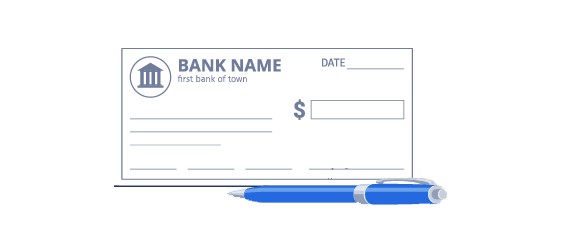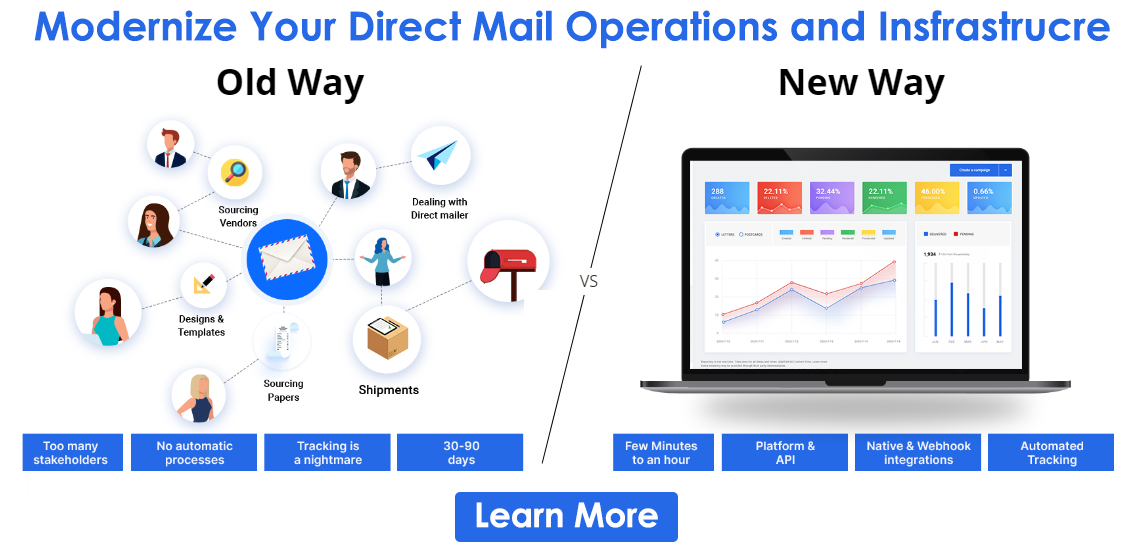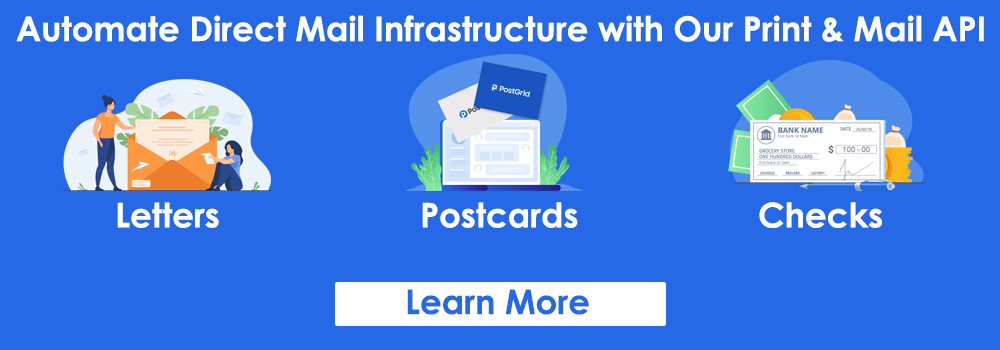Banks Drafts Vs Certified Cheques
Banks Drafts Vs. Certified Cheques - Meaning and Differences
Businesses use several types of payment instruments to honour their daily transactions. We know that the most common methods are cash and cheque. Also, most companies use online banking as their prime way to settle transactions. Though these payment methods are ideal for small payments, what about receiving large sums of money? In this case, companies need a more trustworthy instrument like bank drafts and certified cheques to guarantee payments.

Some clients might ask you to give them a draft or certified cheque before completing their orders. At such times, you must know the difference between bank draft vs. certified cheque before deciding which to use.
Each of them has a purpose and a list of advantages and disadvantages. Hence, it is a must to know about your options in-depth before making a decision.
In this blog, we have discussed the difference between a bank draft and certified cheque. Keep reading ahead to know which one you should use more often.
What Is a Bank Draft?
A bank draft is a payment method through which the issuing bank guarantees payment to the payee. It does so on behalf of the payer who also has an account with the bank.
Here the bank checks whether there are sufficient funds in the payer’s account to complete the payment. If yes, it signs and issues a bank draft to help you transfer the payment.
A bank draft does not require the payer’s signature but has their account details.
How Does a Bank Draft Work?
To get a certified bank draft, visit your bank’s local branch with a government-issued ID. The teller would then ask you for the payee’s name and the amount you intend to pay.
Tellers or banks representatives act as intermediaries in such transactions. They check whether you have enough funds to cover the amount and then issue a bank draft accordingly.
After the verification and issuance, the said amount is deducted from your account and kept with the bank until the payee cashes the draft.
In short, the bank freezes the amount in your account so you cannot withdraw it, and the transaction completes successfully.
There are two sections in a bank draft. The first one is the negotiable part that you need to give to the payee, whereas you can keep the second part (also called the receipt or the non-negotiable part) for your files. In case the draft is stolen or lost, you can use this receipt to stop payment.
Once you get the bank draft, you can give it to the payee. Then, the payee can cash it at the bank or deposit it into their own account to finish the transfer.
Pros of Bank Drafts
- They are convenient; you don’t have to undertake the trouble of withdrawing large sums of money as your bank transfers them directly.
- How long does it take to get a bank draft? Well, depending on your financial institution, it does not take more than a few minutes. Hence, it is easy to pay via bank draft.
- The prime difference in TD certified cheque vs. bank draft is that there is no maximum amount restriction. So, you can get a bank draft of any amount as long as you have the funds to honour the payment.
- Your bank charges a low fee to issue bank drafts.
- There is no payer signature requirement.
- You don’t need the payee’s account details to get a bank draft.
- Bank drafts offer a safer method to pay someone.
- You can request a bank draft from your bank in any currency.
Cons of Banks Drafts
A bank draft payment cannot be stopped or revoked. If the funds reach the wrong party, the issuing bank does not do anything about it.
What to Do If You Lose a Bank Draft?
Sometimes, you may misplace a bank draft by mistake. Or maybe it was torn or destroyed and cannot be used anymore. What can you do in such scenarios?
If you have the non-negotiable part, take it to your bank. The teller verifies that the draft is not deposited, yet, and there are still sufficient funds in your account, and issues another draft if you want.
But, you are still responsible for the earlier bank draft and need to make sure that it is unused.
If you lose the non-negotiable part of the receipt, you can still trace the bank draft under certain conditions. But, it can take several weeks, and you need to pay extra.
Also, sometimes you get a bank draft but don’t want to use it anymore—for example, when you put up funds for a bid but lose the contract. In such situations, you can take both parts of the draft to the bank and claim a full refund.
What is a Certified Cheque?
What does a certified cheque look like? Well, it is a personal cheque, so it also looks like one. But, it works in a very different manner.
To begin with, you don’t get a cheque book filled with certified cheques; you need to visit your bank and request a certified cheque. You are also charged a fee for it.
Certified cheques are signed by you but guaranteed by your bank. The bank issues a certified cheque only after verifying whether you have sufficient funds in your bank account to pay for it. Hence, these cheques cannot get bounced.
How Does a Certified Cheque Work?
Banks issue certified cheques only to their customers, so visit a bank where you have an account. Carry some form of personal identification and your account details.
Request the bank staff to give you a certified cheque. The teller will verify your account and check your balance. If it’s enough to cover the amount, they will print out a cheque for you and stamp it with the word ‘certified.’
Apart from this stamp, certified cheques also require the signature of the payer. Once stamped and signed, you can hand over the cheque to the payee.
The payee can deposit or cash the cheque before its validity is over, say 60 to 90 days. Please note that you cannot stop payments once the cheque is issued to someone.
Pros of Certified Cheques
- You can use certified cheques for large purchases or settle high-value transactions.
- Certified cheques offer payment security if you are not sure of the buyer’s credit score.
- While comparing bank draft vs. certified cheque Canada, please note that it takes less time to get a certified cheque as compared to getting a draft.
Cons of Certified Cheques
- The bank charges a high transaction charge on certified cheques.
- You cannot stop payments even if a scammer gets your cheque.
So, is a bank draft the same as a certified cheque? The answer is clearly no, even though there are quite a lot of similarities. We will discuss them below.
Similarities and Differences Between Bank Drafts and Certified Cheques
Similarities
- Bank drafts and certified cheques both need you to have an account with the issuing bank. This way, the bank can verify your balance.
- If the available balance in your account is not enough, you can neither get a bank draft nor a certified cheque.
- You may use both these payment methods for formal transactions or professional relationships. So, either one of the payers or the payee is a company or both.
- A bank draft and a certified cheque are both used to transfer large amounts of money. If the pay is small, you may use a personal cheque or cash.
- The payee is the one that benefits from such payment instruments as the bank guarantees the payment to them.
- You cannot reverse payments completed through bank drafts and certified cheques unless under certain circumstances.
- Both these tools help you transfer funds easily as you don’t have to carry around thousands of dollars in cash. The bank gives you a piece of paper that you can send to your payee.
- You have to show an ID for getting both a bank draft and a certified cheque.
Differences
| Banks Drafts | Certified Cheques | |
| Meaning | Bank drafts are a payment tool issued and guaranteed by the bank. | Certified cheques are a type of personal cheques issued by the customer and guaranteed by the bank. |
| Signature | Bank drafts do not require the payer’s signature. However, certified bank drafts are signed or certified by a bank official for more safety. | Certified cheques need the payer’s signature to become valid. It also needs certification by the bank official. |
| Reserving Funds | The bank freezes the amount in your account to complete the transaction. In short, it puts the money aside so that the payee can withdraw it. | In the case of certified cheques, the bank does not always put the money aside. It depends on the issuing bank’s guidelines. |
| Fee | Banks charge a low fee to issue a bank draft when comparing the bank draft vs. certified cheque cost. | Certified cheque fees are comparatively very high. |
| Particulars | Bank drafts carry the date, payee’s name, and the account payable. | Certified cheques carry the date, payee’s name, the amount in figures and words, and the payer’s signature. It also has a bank stamp. |
| Stopping payments | You can stop a bank draft payment if it is destroyed or lost. The bank can give you a replacement bank draft. | Since the bank has already guaranteed the payment, you cannot stop the payment once the cheque is issued. |
The above points regarding certified cheque vs bank draft RBC should be able to help you select the right option. It is advisable to also consider the amount you need to pay and the transaction type before using any of these tools.
How to Prevent Bank Draft and Certified Cheque Frauds?
While talking about bank draft vs. certified cheque TD, we mention that these methods are highly secure. Yet, they can be stolen and misused by scammers.
After knowing what is a bank draft vs a certified cheque, you should also know how to deal with fraud. If a seller wants to pay via a bank draft or certified cheque, you should be careful regarding its authenticity.
Make sure that the draft or cheque they provide is not fake or forged. But, sometimes, it is difficult to identify such fake drafts and cheques, so contact the issuing bank to check their authenticity. Ask the bank to check whether that particular draft or cheque is issued through them or not.
Another red flag to look for is when someone sends you to pay more than what you owe and asks you to return the surplus. After handing back the excess amount, you will notice that you never received the money in the first place.
Hence, if you receive payments via such methods, cross-check its authenticity with your bank and the issuing bank.
PostGrid’s cheque API uses several security features like micro prints, watermarks, etc., to keep your offline payments instruments safe.
Bank Draft Vs Money Order Vs Certified Cheque
There is another payment tool called the money order that people confuse with bank drafts and certified cheques. So, let’s clear the confusion by discussing money order vs. bank draft vs. certified cheque.
As we have already discussed certified cheque vs. bank draft Scotiabank, we will focus on money orders. A money order allows you to transfer funds up to $999.99.
You can get a money order at the post office as the payment is guaranteed by Canada Post.
It means that you don’t need to have a bank account to get a money order.
Money orders are ideal to pay bills and buy something across Canada. They are a great alternative to make a payment as you can’t mail cash.
A money order has two parts:
- A negotiable form with the enquiry information and proof of purchase printed on a receipt.
- Added safety features include a barcode serial number, security code, and polarized ink.
Postal money orders don’t need you to share your bank account information or other financial details.
You have to pay the amount on the money order and the service fee. Canada Post charges a fee of $7.50 per money order. Please remember that the post office only accepts cash or debit card payments, so you cannot use a credit card.
Print and Mail Cheques With PostGrid
Our cheque API can help you print and mail cheques with complete security and in very little time.
It can help you create valid cheques with your account details. Moreover, our API also prints and mails those cheques to the correct mailing addresses on your behalf.
Find some of our features below:
Pre-built Cheque Templates
If you want to print your own cheques, designing them might be a concern. But, with PostGrid’s cheque templates, you can get started in minutes.
Our print and mail API already has the templates of all banks in Canada. Just enter your bank name, download the template, and you are good to go.
You can edit these templates to add customizations like your company name and other details.
Added Security Features
PostGrid is compliant with PIPEDA, HIPAA, SOC-2, and many other data security laws. You can be assured that your data is safe and confidential.
Also, there are many security features that we use to create and print your cheques, like:
- Holograms
- Micro prints
- Chemical wash detection
- Heat-reactive inks
- Secured envelopes
- MICR (Magnetic Ink Character Recognition) toner
- Watermarks, etc.
API Integration
You can integrate your accounting software with our API. It will help you fetch data from your CRM in seconds and write cheques in an automated way.
This way, you can save a lot of time filling in cheque details and printing them one by one.
Our API can write cheques, print them on cheque paper stock, and get them mailed by itself.
Validate Mailing Addresses
To send cheques to the correct postal addresses, you need to validate your mailing lists. This step is very important as mailing a cheque to an incorrect address can lead to theft and scams.
Hence, PostGrid enables you to standardize and verify your mailing addresses before mailing cheques to them.
Pay On Time
PostGrid can create, print, and mail your cheques via Canada Post in just two days. Therefore, you can make your payments in time.
Track Your Cheques
Once you send out a cheque, you can track it through our easy-to-use dashboard. The interface is simple to navigate, and you can view your mail status hassle-free.
Over to You
Both certified cheques and bank drafts work in almost the same way. Here, the main objective is to offer assurance and confidence to the person receiving the payment.
Using these payment forms guarantees that the amount is paid without the risk of a payment bounce. But, take care that the cheque or draft is deposited into the concerned account only. Also, try saving the receipt as it can come in handy in case of any fraud.
While comparing a bank draft vs. certified cheque, please note that both are excellent ways for businesses to pay someone. With some effort and a small fee, you can avail of their benefits and carry out your transactions smoothly.
Want to design, print, and mail certified cheques without spending much and taking any effort? Try PostGrid’s direct mail API that can make it all happen for you!
The post Banks Drafts Vs Certified Cheques appeared first on PostGrid.
source https://www.postgrid.ca/difference-banks-drafts-vs-certified-cheques/
source https://postgridcanadainc.tumblr.com/post/669214632358084608
source https://harveywilson355.tumblr.com/post/669221645859389440



Comments
Post a Comment